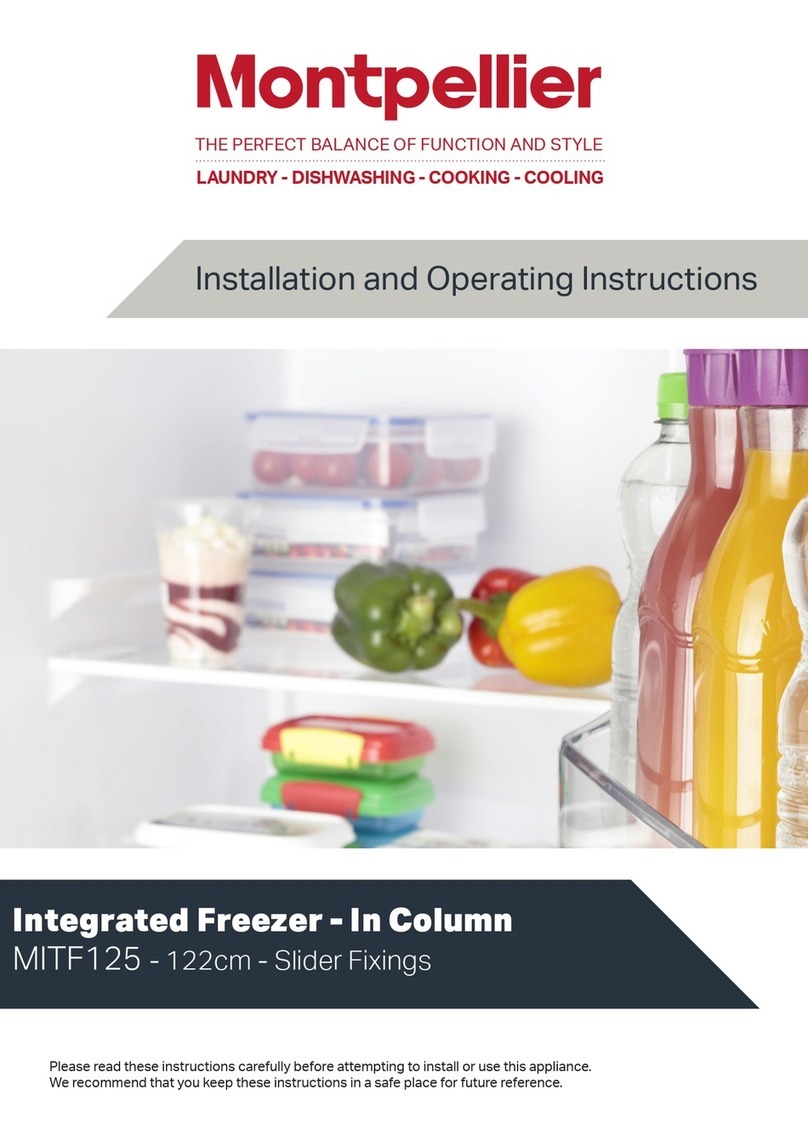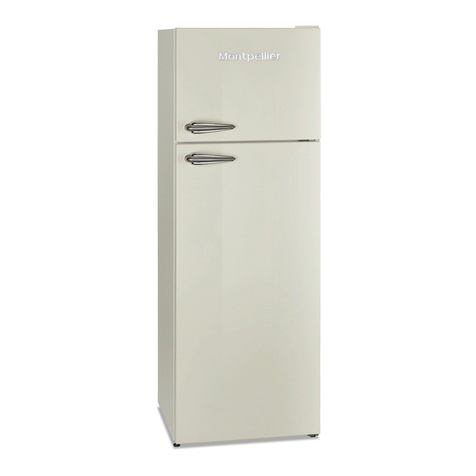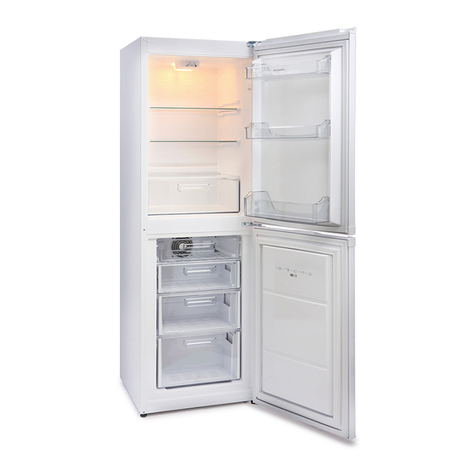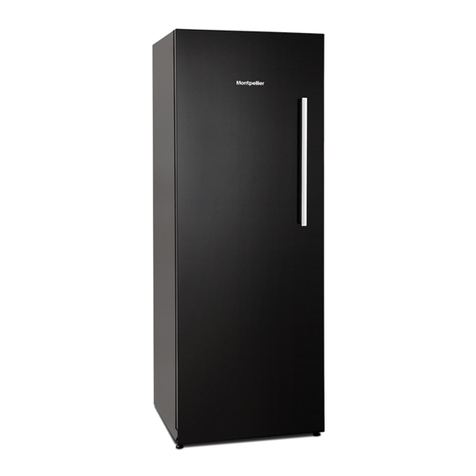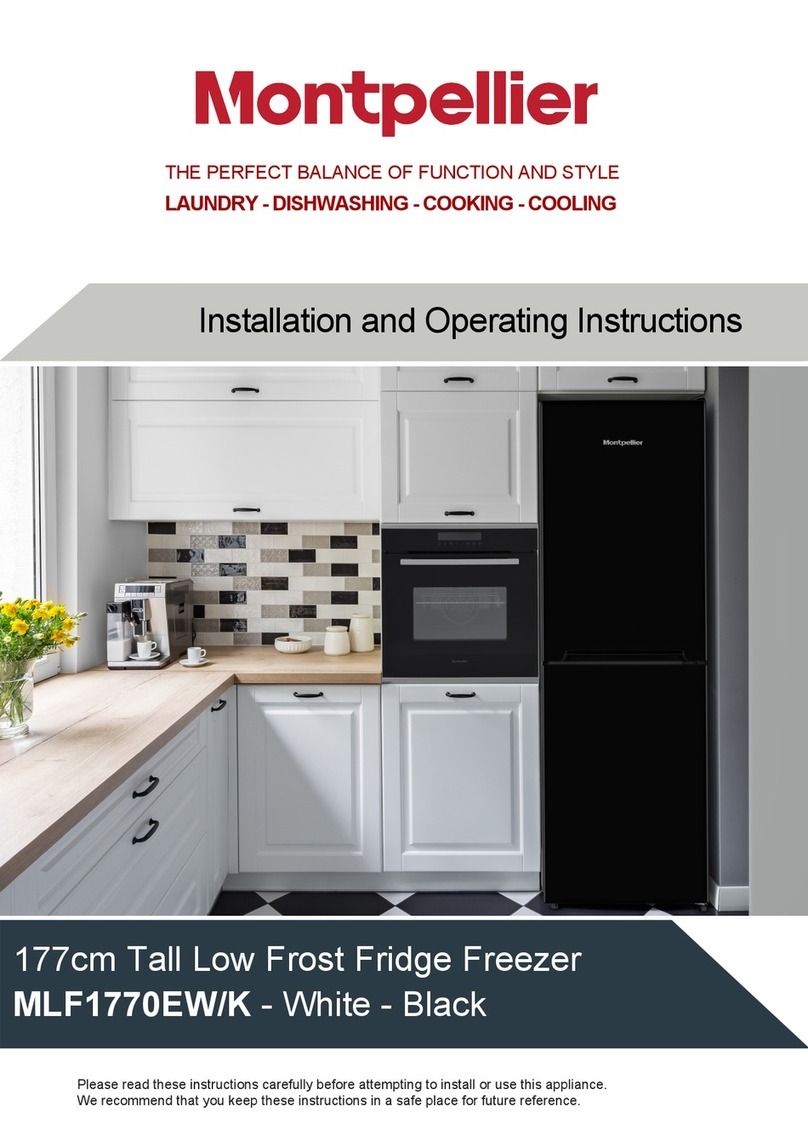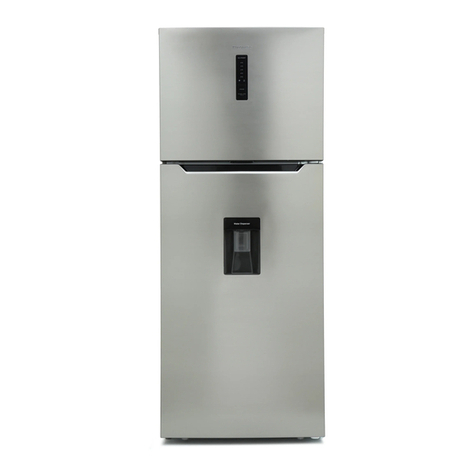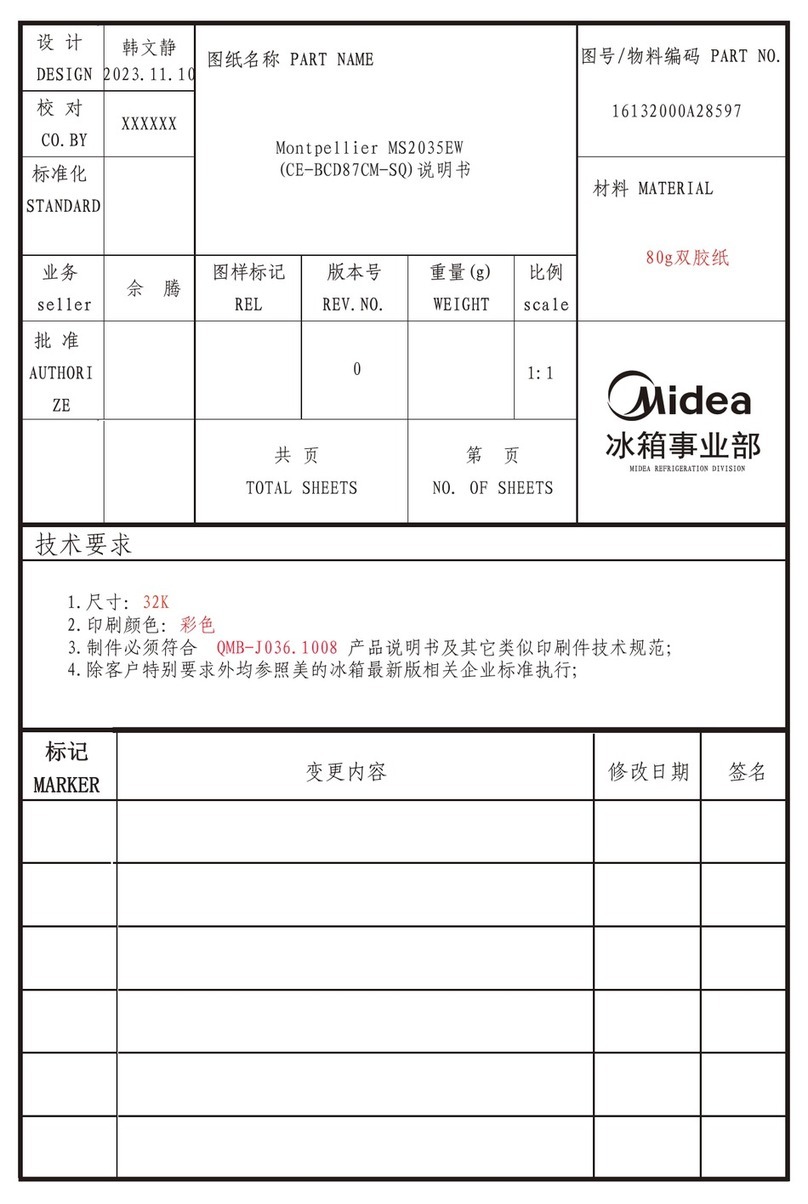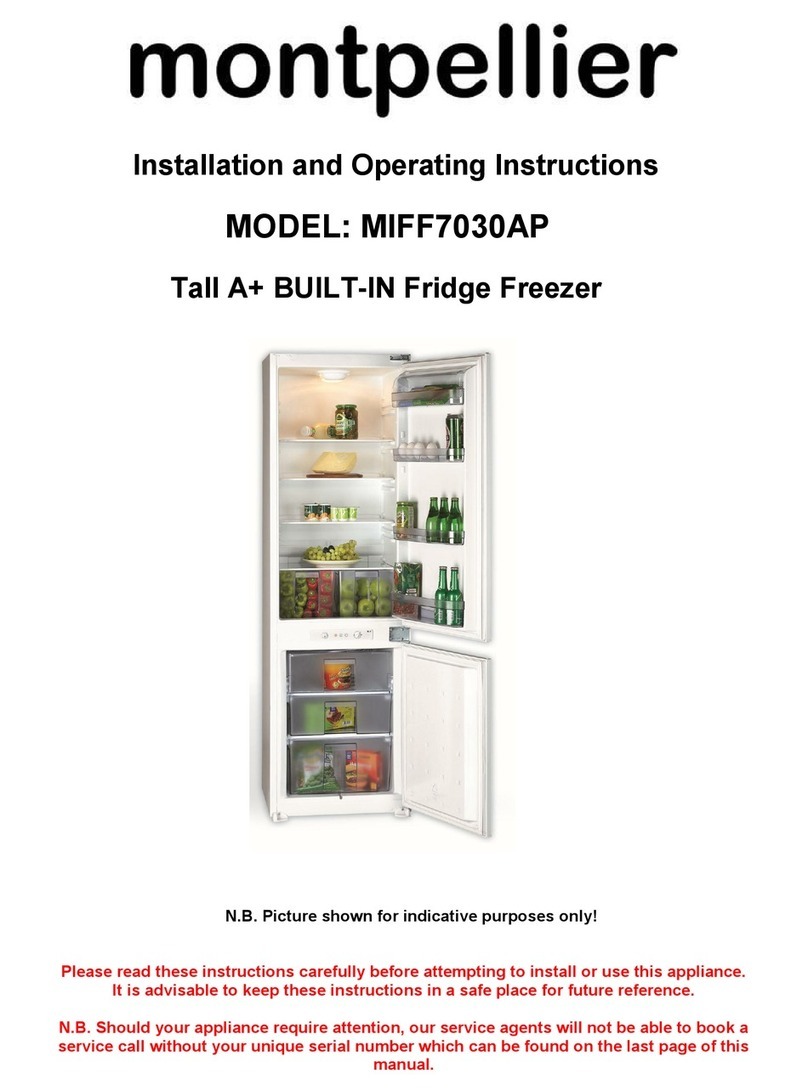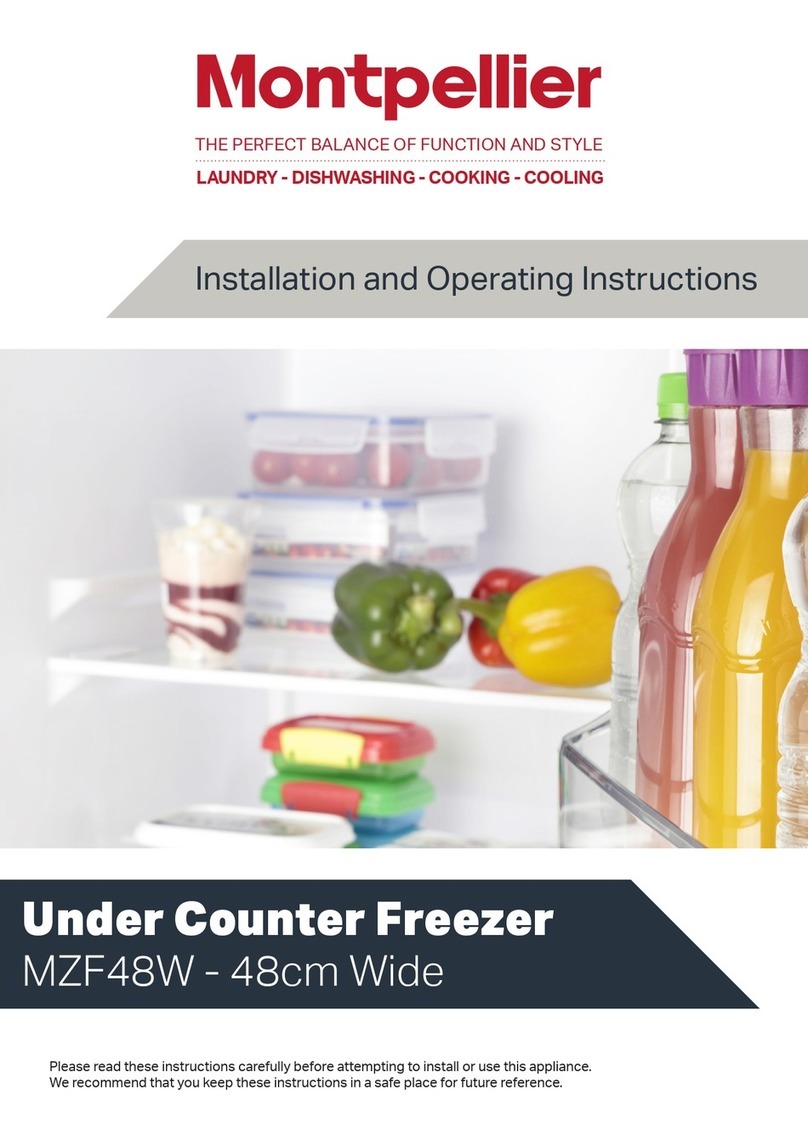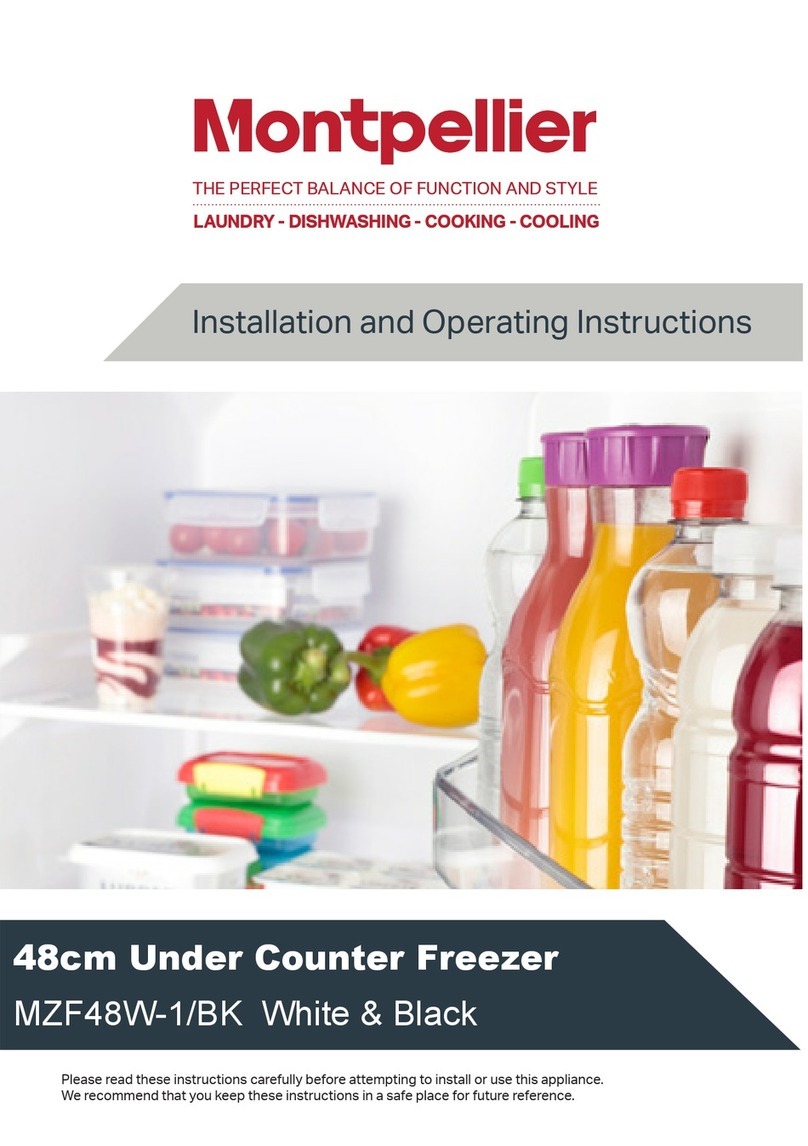
9
3.5. Normal Operating Sounds
You may hear faint gurgling or bubbling sounds when the refrigerant is pumped to the
cooling system and through the coils or tubing at the rear of the appliance. When the
compressor is in operation you may hear a slight whirring sound or pulsating noise. The
thermostat controls the operation of the compressor, and you may hear a slight click as
it cycles in and out.
3.6. Energy Saving Advice
Do not install the appliance close to sources of heat, such as a cooker,
dishwasher or radiator.
Locate the appliance in a cool well-ventilated room and make sure that the air
vents are clear
Try to avoid keeping the doors open for a long time, warm air will enter the
cabinet and may cause a build-up of ice as well as affecting the energy
consumption. Ensure there are no obstructions preventing the doors from closing
properly
Ensure that the door seals are clean and there are no tears or splits.
Keep the most perishable foods, (those with a short shelf-life, such as
cooked meats), in the coldest part of the fridge. The Salad Crisper Box is
the warmest part of your fridge and should be used for vegetables, salads and
fruits etc. (see Description of Appliance on Page 2)
Do not overload the fridge: the cooling air that circulates to keep the
fridge cold gets blocked and pockets of warm air form.
Do not put hot food into the fridge or freezer – let it cool down first.
3.7. In the Event of a Power Failure
If there is a power failure, keep the doors closed. When the power has been restored
the appliance will start to operate but it may take some time to achieve the pre-set
operating temperature. Check the condition of your stored food items and liquids.
When the water has frozen, turn
the controls (shown left) to
empty the ice-cubes into the
ice-cube holder (located
directly underneath the ice-
maker). If any of the ice-cubes
stick in the tray(s), give the
tray(s) a gentle ‘tap’ to help
dislodge them.



